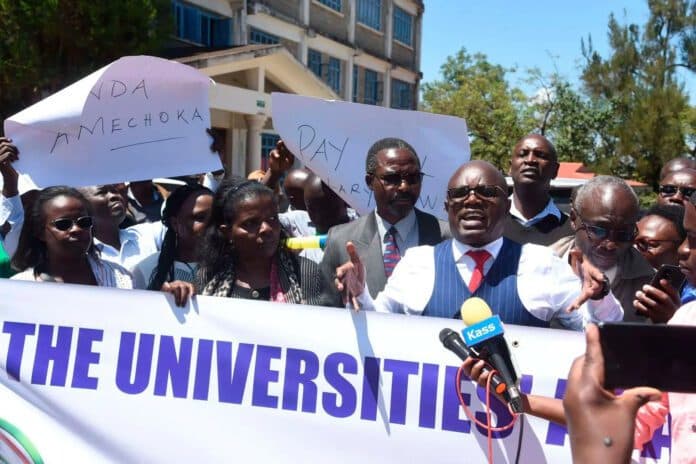We're loading the full news article for you. This includes the article content, images, author information, and related articles.
A potential breakthrough in the six-week nationwide lecturers' strike offers a glimmer of hope for thousands of Kenyan university students, though final agreement on salary arrears and a new CBA remains pending.

After more than 40 days of paralysed learning across Kenya's public universities, intensive negotiations between the government and striking lecturers have entered a critical phase, raising cautious optimism for a resolution. The Universities Academic Staff Union (UASU) confirmed on Thursday, October 30, 2025, that discussions have been "candid," with the government reportedly showing new goodwill to end the industrial action that began on Wednesday, September 17, 2025.
UASU Secretary-General Dr. Constantine Wasonga stated that the government has revised its payment plan for the contentious KSh 7.9 billion in salary arrears, proposing to release the funds in two phases instead of the previously offered three. While no final deal has been signed, this shift represents a significant step in resolving the primary grievance that has kept dons out of lecture halls. "We are guided by our organs, and we will present the proposal to our National Executive Council (NEC) and National Delegates Conference (NDC) to take a position on the new developments," Dr. Wasonga announced following the meeting. The strike, however, remains officially active until a return-to-work formula is formally agreed upon and signed.
The core of the protracted dispute lies in the full implementation of the 2017–2021 Collective Bargaining Agreement (CBA). For weeks, the government and the lecturers' unions presented conflicting figures regarding the outstanding amount. Education Cabinet Secretary Julius Ogamba and the Salaries and Remuneration Commission (SRC) had initially insisted that only KSh 624 million was pending, claiming KSh 7.2 billion had been disbursed through annual salary increments. This was vehemently rejected by UASU, which maintained the debt stood at KSh 7.9 billion.
The stalemate saw a significant shift when the Principal Secretary for Higher Education, Beatrice Inyangala, acknowledged on Friday, October 24, 2025, that the outstanding balance was indeed KSh 7.9 billion, aligning with the unions' figures. Despite this admission, the government's subsequent offer to pay the sum in installments was rejected by the unions, who demanded the full amount be paid in a single tranche.
Compounding the crisis is the stalled negotiation for the subsequent 2025–2029 CBA. In a letter dated October 21, 2025, UASU formally rejected a KSh 3.1 billion counter-offer from the SRC and the Inter-Public Universities Councils Consultative Forum (IPUCCF). Dr. Wasonga described the offer as "unacceptable and unrealistic," stating it failed to account for high inflation and the rising cost of living. The union argued that the proposal undermined the constitutional right to fair remuneration and genuine collective bargaining, accusing the SRC of imposing final positions rather than providing negotiable ranges.
The primary victims of this standoff have been the students. With academic activities suspended, thousands have been left idle, forcing many to return home or seek menial jobs to survive. The disruption threatens to significantly delay academic calendars, potentially pushing back graduation dates for thousands of students. Student organizations have expressed deep frustration, with some threatening to hold street protests to compel both sides to find a solution. Rose Isichi, a first-year nursing student at Moi University, described how she has resorted to hawking products to support herself. Edwin Lagat, the President of the Moi University Student Organisation, warned of the social consequences of prolonged idleness, including a rise in drug abuse and other risky behaviours.
As the nation watches, the responsibility now rests with the union's leadership and government negotiators to bridge the remaining gaps. A successful resolution would not only reopen the doors to learning but also begin to address the systemic financial and labour issues that have repeatedly plagued Kenya's higher education sector. Failure to do so risks inflicting long-term damage on a generation of students and the future of public university education in the country.
Keep the conversation in one place—threads here stay linked to the story and in the forums.
Other hot threads
E-sports and Gaming Community in Kenya
Active 7 months ago
Popular Recreational Activities Across Counties
Active 7 months ago
The Role of Technology in Modern Agriculture (AgriTech)
Active 7 months ago
Investing in Youth Sports Development Programs
Active 7 months ago